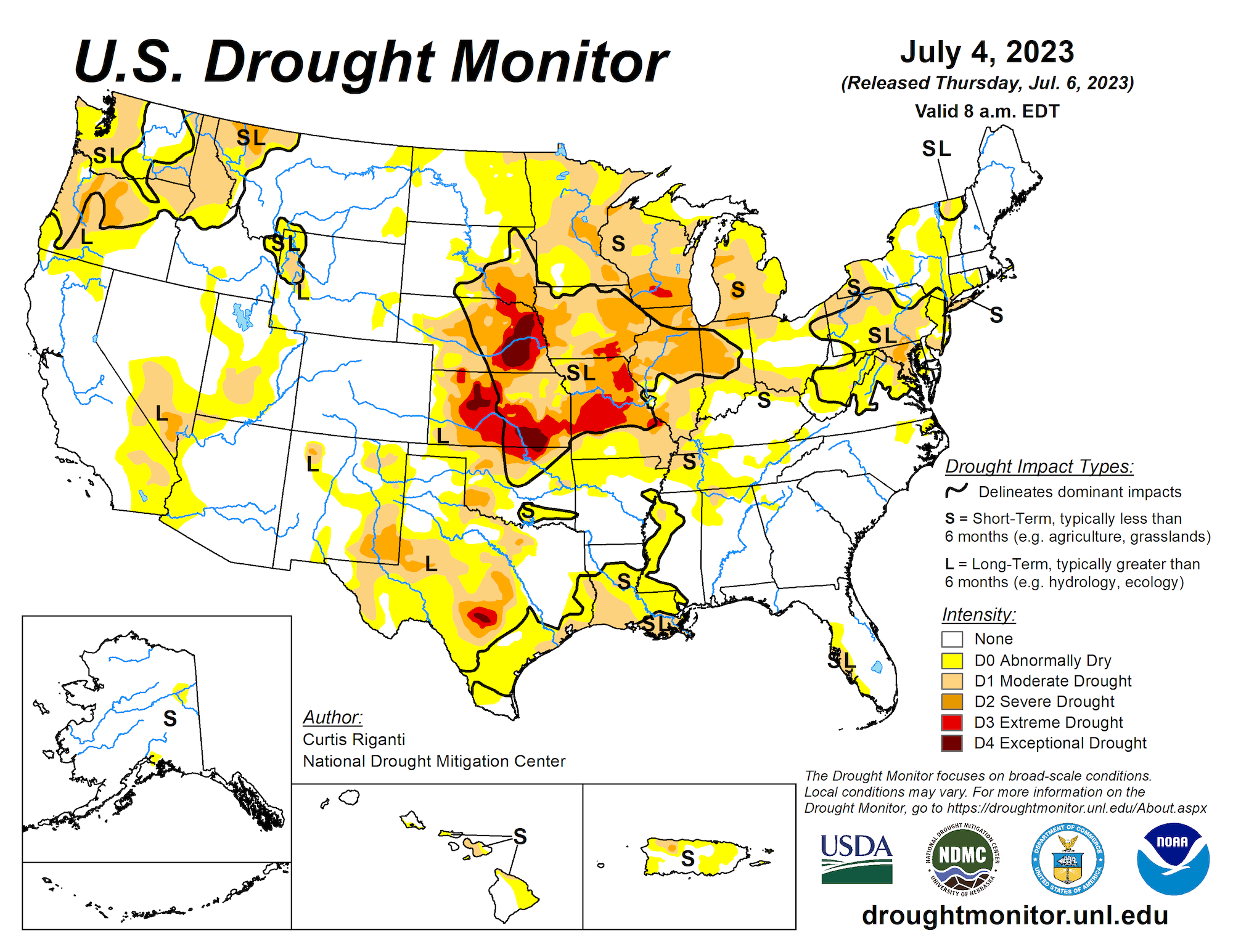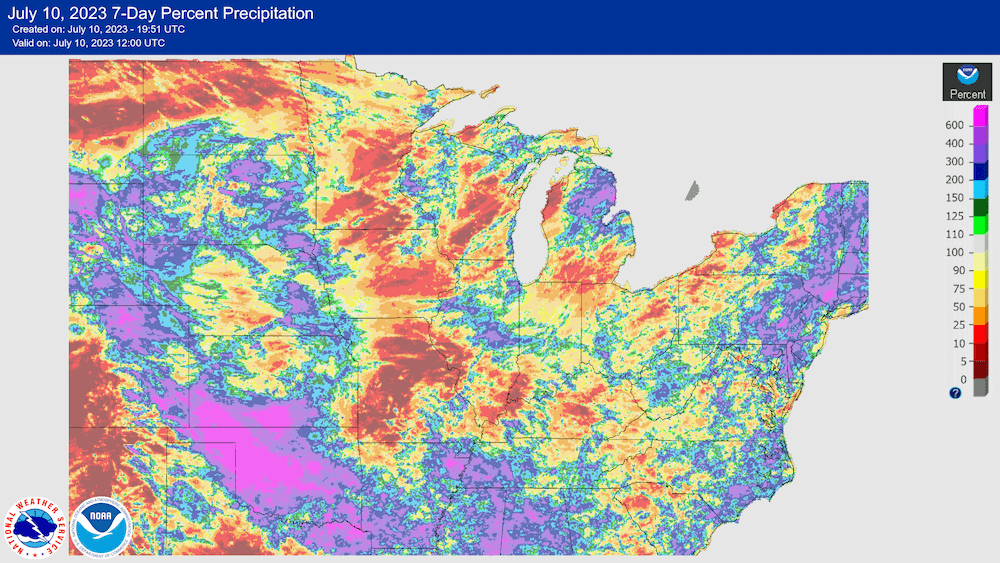Producers in much of the Midwest are dealing with the driest conditions they've seen in years, although recent rains provided relief in some areas.
Drought has become a presence in the Midwest this summer after an “incredibly dry” May and June, according to Agriculture Department meteorologist Brad Rippey. Minnesota, Wisconsin, Iowa, Illinois, Indiana and Michigan are all dealing with it to some degree, while parts of Nebraska, Missouri and Kansas are seeing “extreme” and “exceptional” conditions, according to the latest U.S. Drought Monitor report.
Rippey said recent rains have been inconsistent, hitting some areas and missing others.
“We have seen some relief,” Rippey said. “It hasn’t been equal opportunity relief because we have seen much more relief in some areas than others.”
The drought’s grip on the Midwest has had a noticeable impact on the U.S. corn crop. Approximately 14% of the crop was rated poor and very poor, while 45% was rated good as of Sunday, according to the National Agricultural Statistics Service. Thirty-one percent was rated fair, and 10% was excellent.

Rippey said these are the worst corn conditions reported at this time of year since 2012. He also said more U.S. corn is currently experiencing drought this year than any time since the summer of 2012.
“We’ve got corn starting to silk, soybeans are starting to bloom across the Midwest, especially in those earlier planted areas,” Rippey said. “So the only saving grace at this point in the season is that we haven’t had, in most of the Cornbelt, extreme heat.”
Rippey said most producers in the region expect to see four or more inches of rain per month at this time of year. The recent rains would mean some of producers “just breaking even” at this point in the growing season, he said.
Jeff Varner, who farms in Butler County, Kansas, saw his worries about the drought ease after he received what he called a “million dollar” rain last week, which presented his corn and soybeans with between four to five inches of moisture. He believes if he receives another couple of inches in the next few weeks and one more rain for the soybeans in August he’ll be “pretty well made.”
“My disposition is a whole lot better than it was a couple weeks ago,” Varner told Agri-Pulse.
Many of Varner’s neighbors were less fortunate, however, receiving only around two inches, he said. Tiya Tonn, who ranches cattle with her husband and son, said the rains often skip over “pockets” of the county.
“You’ll talk to some of our neighbors and they’re soaked,” she said. “They’ve got great crops and they’ve got plenty of water and we don’t.”
Tonn said several of their ponds have dried, and they will be limited on how much hay they will be able to put up this year due to the drought.
Drought has stifled pasture growth for several cattle producers across the region, forcing some to make decisions about herd sizes and sourcing outside sources of hay. The Missouri Attorney General warned producers to be cognizant of hay scams last month amid a surge of demand for outside sources, while Iowa’s congressional delegation last week urged Agriculture Secretary Tom Vilsack to approve emergency grazing on land enrolled in the Conservation Reserve Program due to limited grazing capacity in the state.
Don’t miss a beat! It’s easy to sign up for a FREE month of Agri-Pulse news! For the latest on what’s happening in Washington, D.C. and around the country in agriculture, just click here.
Garrett Hawkins, who raises cattle in St. Clair County Missouri and serves as the president of his state Farm Bureau, told Agri-Pulse that his area has been in drought since last summer. While tight hay supplies put some pressure on livestock producers last fall, a dry spring has made it difficult for farmers to find enough food for their animals.
 While some parts of the U.S. have been drenched by recent rains, much of the key Midwestern growing areas are parched. This map shows the percent of normal rainfall received between July 3 and July 10. Graphic by National Weather Service/NOAA.
While some parts of the U.S. have been drenched by recent rains, much of the key Midwestern growing areas are parched. This map shows the percent of normal rainfall received between July 3 and July 10. Graphic by National Weather Service/NOAA.
“Everyone that’s raising livestock is short of grass,” Hawkins said. “Your hay crop is greatly diminished — anywhere from a quarter to a third of what would be normal.”
Hawkins did say he received seven-tenths of rain a few weeks ago, but most of the pastures in his area are cool-season grasses that don’t grow much at this point in the summer. He also said that despite the rain, many of his neighbor’s crops are “well short” of where they need to be.
Rippey, the USDA meteorologist, said temperatures in the Midwest states have been mild so far this summer, making this a “cool drought." Texas, which also is experiencing significant drought, has seen intense heat, however, due to the arrival of El Niño, a southern shift in the Pacific jet stream that typically brings warmer temperatures to the southern U.S. and Mexico.
For more news, go to www.agri-pulse.com.


